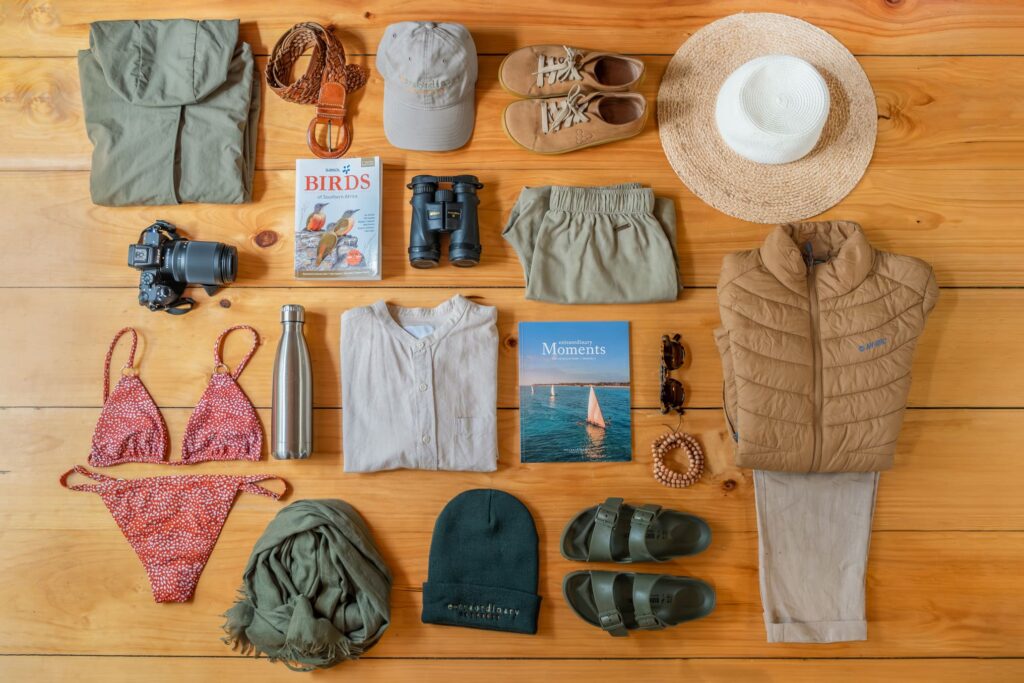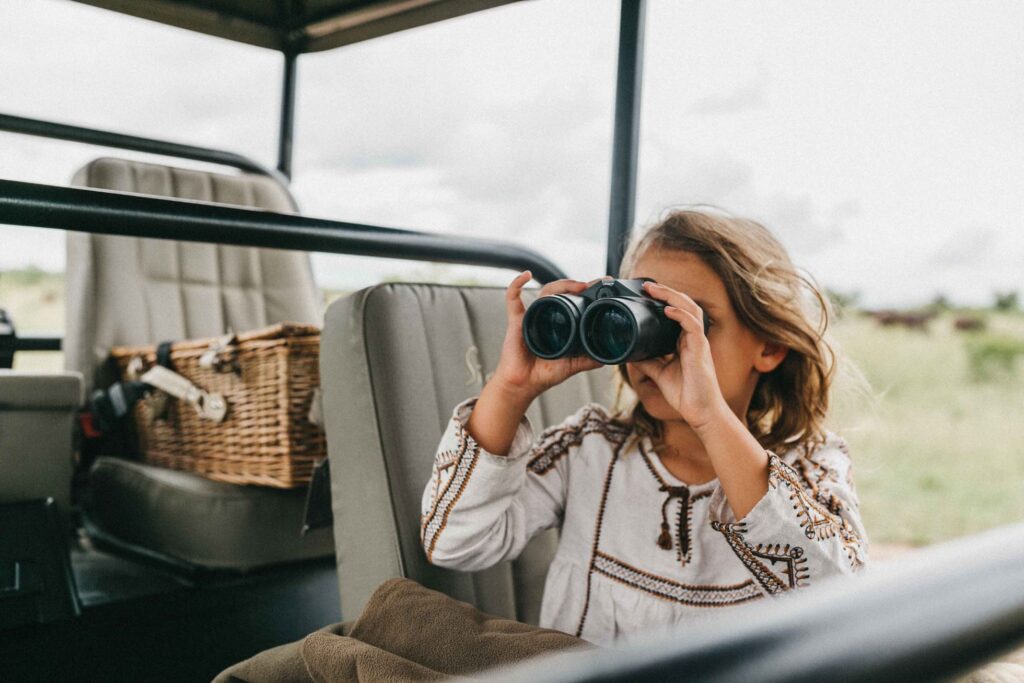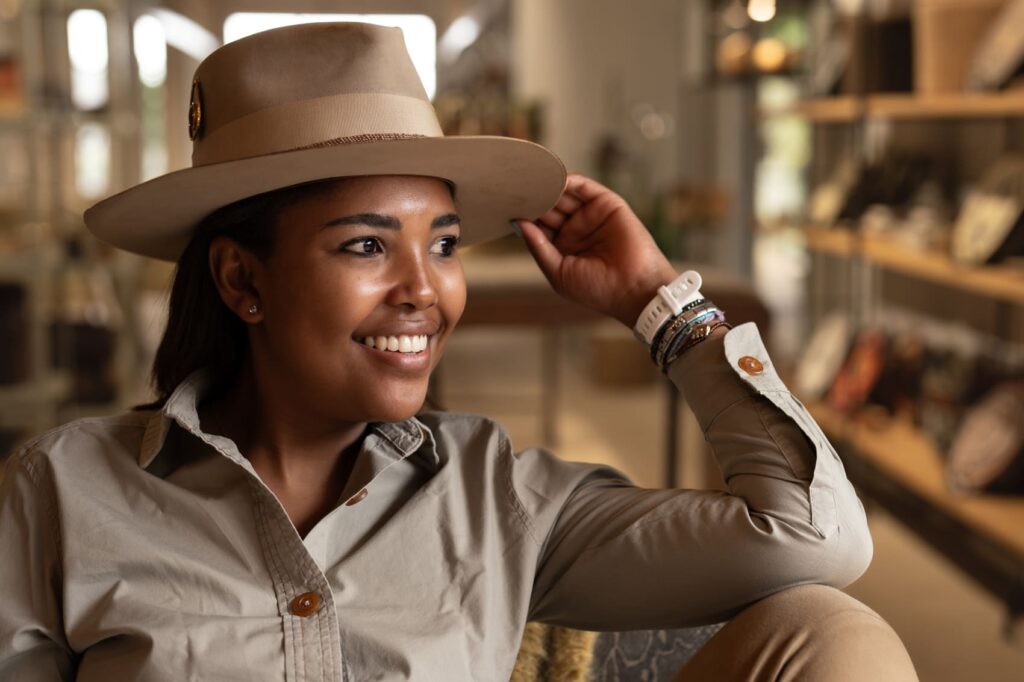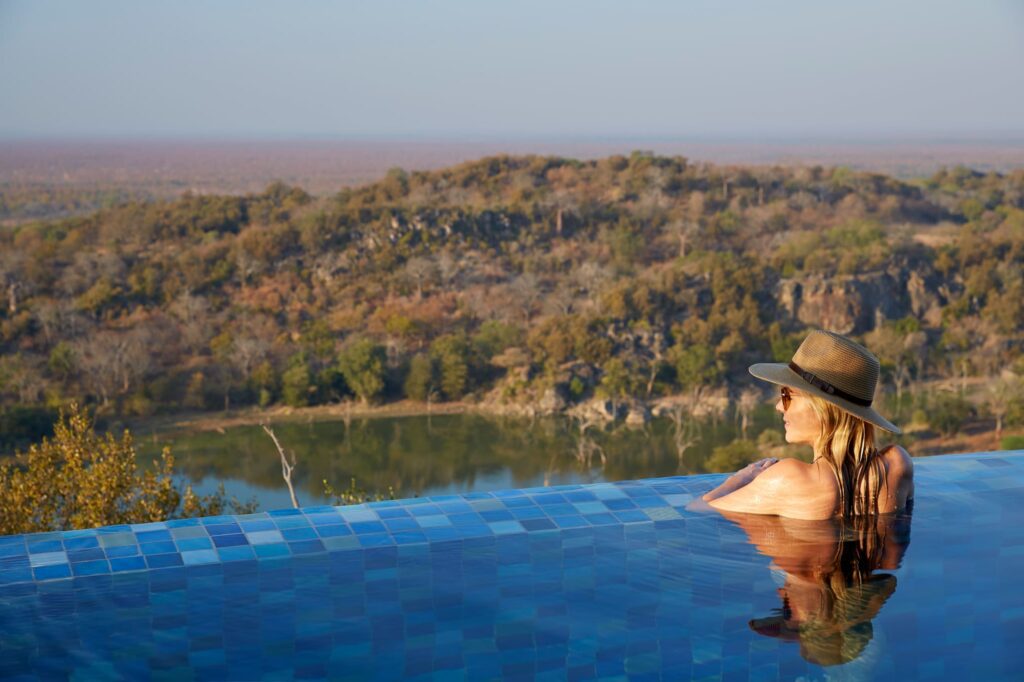From the right color clothing and must-have gadgets to luggage tips and handy accessories, here’s what to take on safari in Africa.

Peering through binoculars in search of elusive wildlife, luxurious lodges overlooking great African plains, sailing above the savannah in a hot air balloon—a safari is not your average trip.
For many travelers, it is a once-in-a-lifetime experience, one that requires extra thought and preparation when it comes to packing. With luggage restrictions to consider (more on those later), there’s little room for things you don’t need. On a specialist trip like a safari, every item has a special purpose.
To help you prepare, we asked our team of experts to put together the ultimate safari packing list. Here’s what to pack for safari to make sure your trip of a lifetime goes off without a hitch.
Electronics and gadgets

Camera: While taking photos on a phone is handy (and you can even use it to capture through the lens of your binoculars), there are times on safari when it simply won’t do the beautiful wildlife justice—we recommend getting a DSLR or mirrorless camera with a minimum of a 70-200mm zoom, up to 600mm.
Travel adaptor: A universal travel adapter will ensure you’re never without power, no matter how many countries are on your itinerary. Besides charging your gadgets between game drives, you can plug in during layovers at the airport.
Portable power bank: For those times when you need a quick charge, but there’s not a socket in sight. These are great for small gadgets, like phones, AirPods, or Ereaders, and are especially useful during long flights or drives to remote game parks or reserves. We’re big fans of the Anker brand for an option that can last for days, especially in more off-grid, remote situations where camps are powered on solar energy or generators that switch on and off throughout the day.
Binoculars: Some wildlife (birdlife in particular) won’t get close enough for you to see properly with the naked eye. While binos will be readily available at lodges, having a high-quality personal pair you are familiar with is one of our number one safari essentials. We recommend either 8x or 10x magnification, and our go-to’s are Nikon, Bushnell, Swarovski Optik, Celestron, and Steiner.
Bluetooth tracker: These wireless trackers (we love Apple AirTags) allow you to keep track of your checked luggage. It gives you peace of mind should your airline misplace your bags.
Ereader: Save space in your luggage and trade heavy books for an Ereader. It’s a great friend for downtime at the lodge or while in transit. The Amazon Kindle is a good option, and it’s a fun way to download books that will inspire you before traveling to your next destination or great books you hear about along the way.
Noise-canceling headphones: Bush planes (small aircraft that access remote lodges) can be very loud. These are also great for longer flights and anytime you want some time alone with your thoughts. Apple AirPods Pro are a great, compact option, and for a more substantial, sturdy pair we love Bose QuietComfort Headphones.
Clothing

Neutral, breathable clothing in natural colors: Safari clothing should be comfortable and casual, so think cotton items in beige, green, and khaki. Avoid black and blue in the bush, as they attract certain bugs. Most lodges and camps will provide same-day laundry, so you don’t need to worry about packing too many outfits. Must-have items include: Pants, shorts, dresses, long-sleeved shirts, short-sleeved shirts, t-shirts, and tank tops.
Lightweight down/puffer jacket: For those chilly morning game drives or breezy nights by the fire pit, lightweight puffer jackets are handy and easy to pack. One of our favorite options is the Mountain Hardwear™ Stretchdown™ Light Jacket (women’s and men’s).
Lightweight scarf: Protect your head and neck from the sun while out on safari with a light (linen or similar) scarf. It can also work as an extra layer for early morning activities and a pillow for a long flight.
Bathing suit: Many camps will have hot tubs or swimming pools, and we plan many bush and beach safaris with an underwater element. That and we love a good excuse for a new swimsuit. One of our favorite women’s swimsuit brands is Left on Friday, a premium active swimsuit brand with options like the one-piece Sunday Suit and high-waisted Hi-Tide Bottom and Hi-Dive Top that can be used for lounging by the pool or beach and all water sports.
Rain Jacket: While you might never need it, it’s always a good idea to have one just in case. We love the Mountain Hardwear™ Minimizer Gore-Tex Paclite® Plus Jacket (in womens and mens fits).
Packing Cubes: These small fabric compartments will help you organize your luggage. Especially useful for duffel bags. They’re also great for keeping dirty clothes and clean clothes apart (if your lodge doesn’t have a laundry service). This Amazon Basics four-piece set does the trick.
Soft-sided luggage: If you’re traveling by bush plane at any point, you’ll need soft-sided luggage or a duffel bag for your journey. Weight allowances are limited on these light aircraft, with 44 pounds per person in Southern Africa (duffel bags only) and 33 pounds per person per checked bag in East Africa. One of our favorite options is the Eagle Creek Migrate Duffle Bag, made with 100 percent recyclable materials.
Footwear

A pair of sturdy closed-toe shoes: A comfortable pair of shoes (any hiking shoes or trainers) are a must—in fact, some lodges require them for game drives. Also useful if you’re heading to a place that offers walking safaris. For a multi-day trek or gorilla or chimpanzee trekking we recommend something with ankle support and waterproof, like the Salomon Quest 4 Gore-Tex leather hiking boots for men and women).
Comfortable slip-on sandals: Sandals, like Tevas or Birkenstocks, are ideal for downtime around camp or for warmer game drives (where suitable), and are easy to slip on and off.
Accessories

A reusable water bottle: Single-use plastic is banned in some African nations (Rwanda, for example). While many camps will give you a reusable bottle to keep, it’s worth taking your own, just in case.
Sunglasses with lanyard: Protect your eyes from the dazzling African sunshine, and protect your sunglasses from getting lost with a handy lanyard attachment. We love the silicone version at Pilotfish, and REI has plenty of options.
Lanyard case for cellphones: Keep your hands free but always know where your phone is. These are handy in safari vehicles, where things can easily slip out of your pockets on a bumpy ride. We like this Doormoon or UEEBAI one from Amazon.
Waterproof ziplock bag: Handy for phones, passports, wallets, or anything else small and important when on boat safaris or canoe trips. Especially useful in Botswana, Zambia, and Zimbabwe. Another fun thing to have is a waterproof lanyard case, great for river safaris—the JOTO waterproof pouch is very handy and is also fun to take photos with underwater.
Beanie: A warm hat makes those chilly early morning game drives, and night drives so much more cozy.
Ball cap/straw hat: A peaked or rimmed hat will protect your head from the strong African sun.
Useful items

Bug spray/wipes: While we love a good natural option for bug spray (if you’re going that route we love Sawyer products and it’s always nice to have some citronella essential oil on hand), we recommend choose a product with a higher deet content for better protection—at least 20 per cent. Wipes are lighter for your luggage, too (we love Ben’s 30 Tick & Insect Repellent Wipes).
Eye drops: With ever-changing weather, dusty and sandy game drives, heat and tired eyes, having some eye drops on hard is always a good idea. Also, every so often, bugs can fly into your eyes out on safari and you can flush them out on the go with eye drops, ensuing you don’t miss a single sighting.
Hand sanitizer: We all know the drill by now. Keep some on hand to avoid unwanted bacteria, and keep your hands clean on the go.
Mini first aid kit: Don’t let a little ailment spoil your trip of a lifetime. Pack a few handy meds to keep you going. We recommend anti-nausea (for those bumpy transfers and charter flights) tablets, Tylenol, Advil, allergy pills, Benedryl, and cold and flu tablets.
Pill organizer: Want to keep your supplements organized on the go but don’t want to pack every individual bottle? Amazon has some great options for extended trips including this one.
Sunscreen: Protect your skin from long days out in the bush with a high-SPF sunscreen like SPF30 or SPF 50 and one that has both UVA and UVB protection and is water resistant (hello African heat). A stick type sunscreen, or powder brush helps with frequent re-application. Remember to keep it in your day pack.
Dry shampoo: A lifesaver for those early starts at 5 am when you don’t quite have time for a shower but still want to feel fresh (a ball cap also does the trick in a pinch).
Hydration tabs: With all the excitement of game drives and the warm weather, it can be easy to get dehydrated. Hydration tablets or drops are a simple way to make sure you recover quickly. The MiO drops are lightweight and easy to pack.
Hand lotion: Keep your hands hydrated and fresh.
Lip balm: Stop your lips from getting dry and cracked in the sun. Choose one with SPF protection. Burts Bee’s SPF 15 All-Weather Moisturizing Lip Balm is an easy, compact option.
Nail clippers: Nice to have on hand to get rid of annoying hangnails or broken nails.
Wet wipes and tissues: For those times when nature calls and you’re out in the bush, these will come in very handy. A nice, biodegradable option is the Stall Mates collection which has individually wrapped single-use packets.
Dry bag: Stop a damp bathing suit from getting your other clothes wet. Pack a few extra bottles of wine from the Cape Winelands, or gin from your new favorite African distillery without worrying about them breaking inside your bag. Pelican Outdoor has some nice, reliable options.
Plain envelopes: These are useful for divvying up and leaving tips at lodges and camps.
What to take on safari for kids
Portable power bank: Another one, just for the kids’ devices.
Portable games console and a new game: While this is a welcome distraction on long planes and game drives, it also gives kids a little autonomy where they might not always have much (safaris include a lot of sitting down and keeping quiet).
Favorite snacks from home: This can be a lifesaver on a long flight or transfer.
Headphones: Choose a pair with an auxiliary cord to be used on flights, too.
Mini binoculars: A great way to get the kids invested in game viewing.
Drawing paper and crayons: A creative downtime activity—the kids will love recreating all the animals they’ve seen during the day.
Activity books: To keep them entertained during long travel days, extended meals, etc.
A collapsable bag: For taking home art projects and any collectibles from the trip (rocks, shells, etc.).
Baby monitors: For very young children who’ll be sleeping before sundowners. Tip: If you have two phones and a camp with WiFi, you can use a muted video call with the phone in the baby’s room.
Plan your Trip
Ready to start planning your own incredible adventure? We make the process stress-free and enjoyable.
